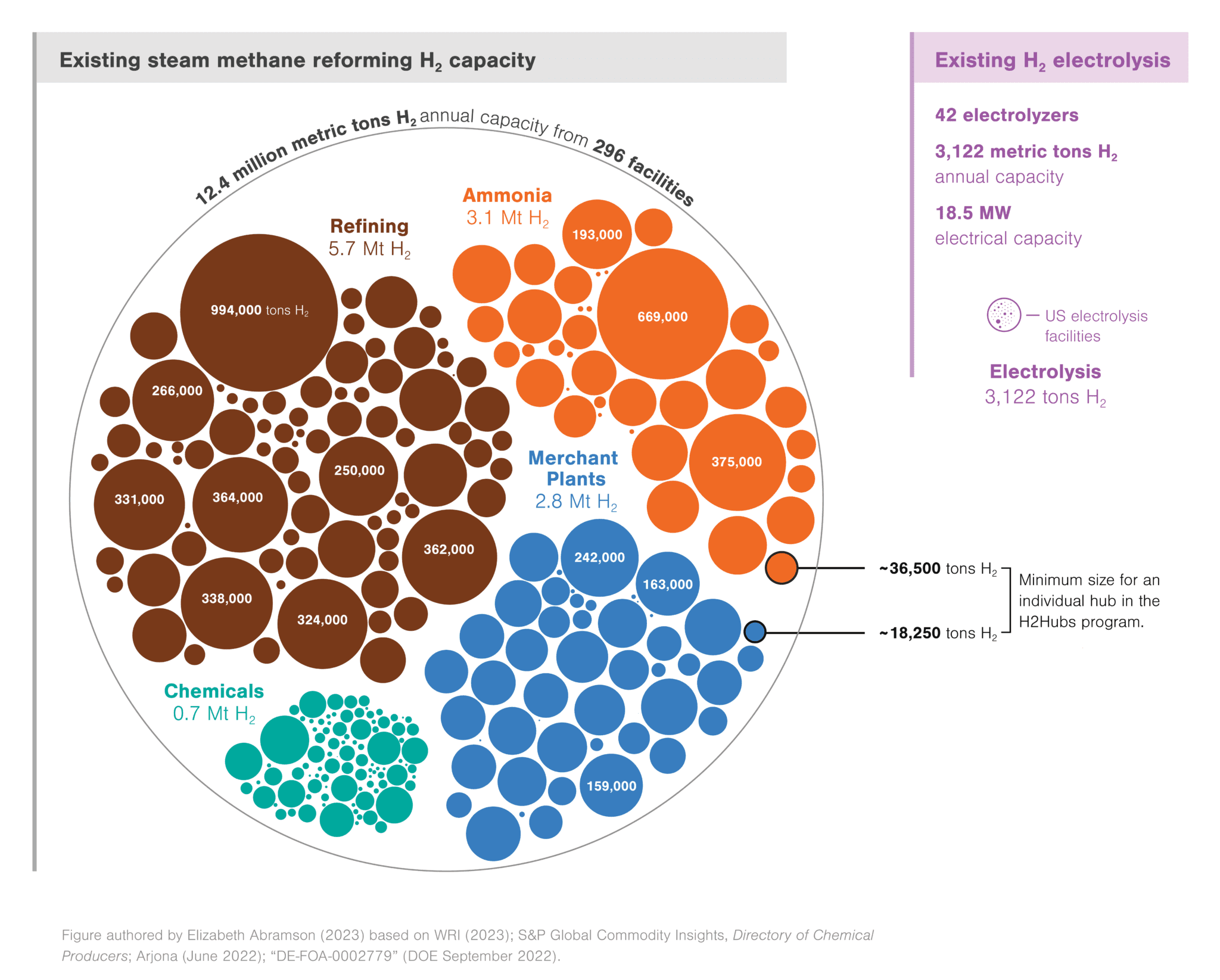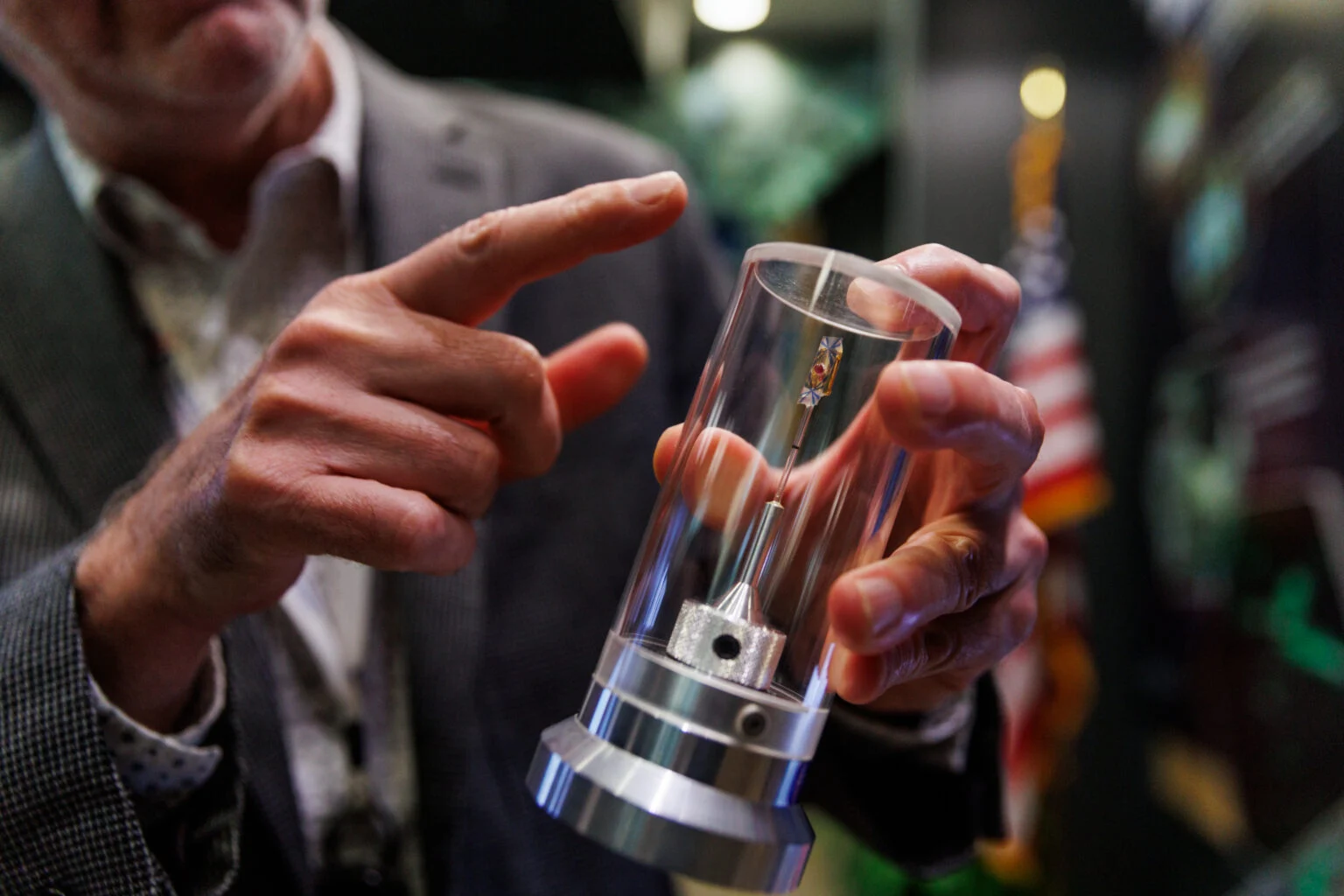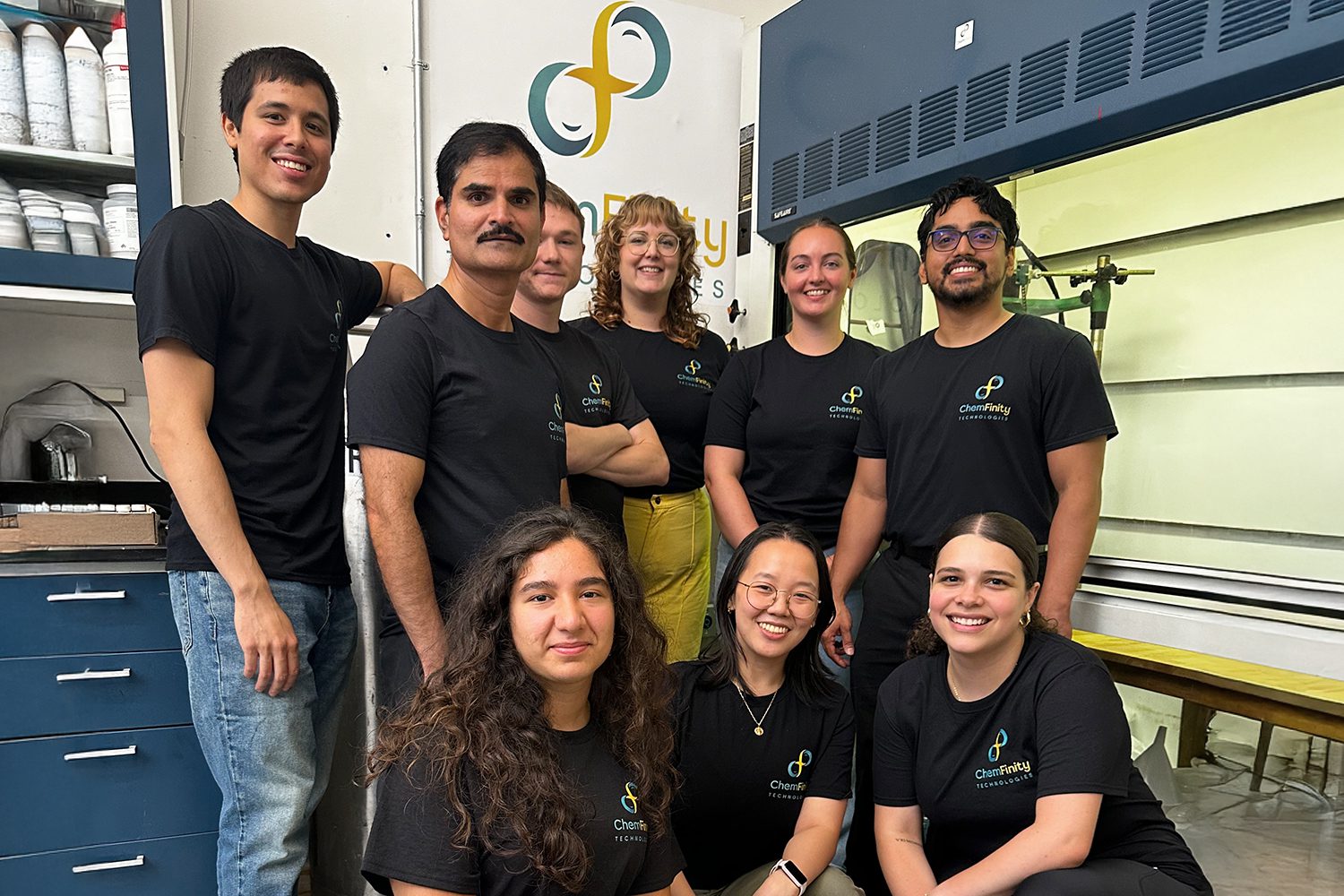This article is the fourth in a series of posts on clean hydrogen’s role in building a net-zero future. Other articles in the series can be found below:
- Hydrogen is Having a Moment
- Why We Need Hydrogen to Meet Our Climate Goals
- How to Transport and Store Hydrogen
In the last few years, clean hydrogen has catapulted to the top of the clean energy policy agenda. On the U.S. Policy & Advocacy team, we’ve written a lot about what clean hydrogen is, why clean hydrogen matters for decarbonization, and the challenges we face in scaling and deploying it. Now, as the Treasury Department weighs how to implement clean hydrogen’s new production tax credit, known as “45V” for its part in the tax code, we break down what has become a healthy conversation about how to define “clean” – including what 45V can help, and what it can’t.
At the core of the debate is the question of how to adequately meet two important objectives embedded in the design of this credit: reducing emissions and scaling clean hydrogen technology. In a perfect world, there wouldn’t be any tradeoffs. But because the electricity grid is still dirty, a rule enabling faster scale-up of "clean" hydrogen production through electrolysis might temporarily rely on more polluting energy sources. Easy choice, right? Not so much, because a slower ramp up could also mean it takes longer for clean hydrogen to play the role we need it to in decarbonizing tough-to-abate sectors like heavy industry, leaving them to pollute longer than we’d like. This is a tough question to answer and we applaud those trying to set down a clear marker for where on the scale we should be, because ultimately this is the type of discourse needed to make smart policy decisions.
Given the impact increased hydrogen demand will have on electricity grid emissions, we believe that grid-connected projects should demonstrate they are not causing additional pollution by procuring new clean power from the same region and as close in time to when the electrolyzer is running to approximate actual emissions. We feel optimistic that it’s possible to define and phase-in these guardrails in a way that simultaneously ensures we’re scaling truly clean hydrogen and allows the market time to adapt so investors can build projects with confidence.
However, we believe that by focusing only on this question, we have ignored other complex and potentially more important challenges in realizing the full benefits of the clean hydrogen economy. Namely, where hydrogen is used and how clean the grid is. In this post, then, we try to put 45V’s importance in context and speak to these separate, equally important policy questions that deserve our attention and which cannot be solved through 45V’s guidance.
First, here’s what 45V is good for:
- Helping reduce emissions from the vast supply of hydrogen we make and use today.
Although clean hydrogen is nascent, the hydrogen economy is not. The US already produces 12 million metric tons (MMT) of hydrogen every year and nearly all of it is dirty – emitting nearly 10 kg of CO2 for every kg of H2, more than twice the baseline legal definition for clean hydrogen set by Congress. Huge industries use this existing supply and make essential products like fertilizer. So, our first task is cleaning up this existing supply, and fast. Fortunately, 45V’s technology-neutral design incentivizes deployment of solutions that can significantly reduce emissions at these factories, like implementing carbon capture equipment. Historically, facilities with dedicated hydrogen production have emitted more than 35 MMT of CO2 annually on average, with even more emissions coming from on-site hydrogen production at refineries and chemical plants. The 45V tax credit makes capturing the vast majority of these emissions economic. And since 45V is aimed at reducing the carbon intensity of the entire production process (“well to gate”), not just the point of production, existing producers will also be motivated to reduce upstream and process emissions that will help decarbonize the whole system overtime. - De-risking and scaling new ways of making clean hydrogen by lowering their green premium.
Of course, we must do more than simply clean up the existing hydrogen supply. If clean hydrogen is to fulfill its promise as a decarbonization tool in new sectors like steel and clean fuel production, we will need to grow the existing 12 MMT supply to between 50 and 135 MMT by 2050 (depending on the future availability and cost of other clean energy resources). That means we need to come up with new, cleaner ways of making clean hydrogen at a cost that can quickly become competitive with incumbent production.The good news is that great progress is being made on this front. Startups are piloting ways to make hydrogen using clean electricity via electrolysis, by decomposing methane via pyrolysis, and even by mining it from natural deposits in the Earth’s crust (known as geologic or natural hydrogen.) Despite their incredible potential, these technologies won’t scale overnight. In many instances, the underlying technology is still very expensive and will benefit from further innovation to reach optimal efficiency and cost reductions. For example, as shown in Figure 1, relative to fossil fuel-derived hydrogen, electrolytic hydrogen makes up less than .01 percent of US production today. That's largely because electrolytic hydrogen costs four to six times more than fossil-based hydrogen.The urgency of driving down the green premium of new technologies is why 45V is so significant to reaching decarbonization objectives. It will help immediately lower the cost of clean alternatives, which in turn will speed up adoption, thereby driving economies of scale, and thus further lowering costs, continuing the virtuous cycle until technologies can scale into the market and compete with incumbent hydrogen in new sectors and novel uses.

Figure 1: Fossil fuel and electrolytic hydrogen annual production in the US. (Source: Carbon Solutions)
Here’s what 45V doesn’t solve for:
- Ensuring clean hydrogen is used most efficiently to achieve a net-zero economy.
A future supply of clean, cheap hydrogen will mean little for the climate if it’s not utilized in the right places and 45V does little to solve for this challenge. The reality is that an affordable transition to net zero requires that we prioritize the use of clean hydrogen where it is most needed. This includes sectors of the economy and processes where other clean alternatives don’t yet exist (think: chemicals and fuels) or where electrification is either too expensive or not possible due to the nature of the energy density required (think: aviation). Unfortunately, even reducing the green premium of the hydrogen supply via 45V does not guarantee these end users will be the ones using clean hydrogen. Lack of access to low-cost construction capital, limited buyer willingness to sign long term offtake agreements, and expensive and uncertain feedstocks are a few of the reasons why these novel applications still need a great deal of support to take off. We will need additional complementary demand-side policy support and private sector leadership to tackle these pieces. Otherwise, we risk using this powerful tool in suboptimal, inefficient, or even overtly harmful ways. - Securing enabling technologies necessary to support a scaled up clean hydrogen economy.
As we scale new ways of making clean hydrogen, we should consider the natural resources and energy inputs required in those processes and seek to limit greenhouse gas emissions associated with their use. For example, making hydrogen by splitting water via electrolysis could theoretically produce zero-carbon hydrogen. However, the source of energy powering an electrolyzer can add a great deal of emissions to the process. The US electricity grid is quite polluting, meaning that a grid-connected electrolyzer producing hydrogen today likely yields hydrogen with an emissions profile that is up to twice that of fossil-derived hydrogen.That’s why it’s crucial for 45V rules to provide clear guardrails on how emissions from the entire hydrogen production process should be calculated. However, even embedding these types of guardrails in the fabric of 45V won’t solve our grid-related hydrogen problems. If we attempt to build electrolyzers and corresponding clean energy capacity on top of a grid that is already regularly congested and curtailing clean energy, we will risk pushing the entire system to the breaking point. Therefore, grid-connected hydrogen will also require a corresponding build out of transmission lines and interregional transfer capacity to ensure it’s truly clean. Both of which will need much more support to move forward than a production tax credit can offer.Finally, 45V won’t solve the hydrogen storage and transportation infrastructure challenges we will need to overcome to support wide scale use of hydrogen in the coming decades. In the future, we may need to move hydrogen around far distances and hold it in place until we use it, something we’re unprepared to do at the pace our infrastructure innovation and build out is happening.
All in all, the Breakthrough Energy U.S. Policy & Advocacy Team is hopeful that we’ll look back 20 years from now and celebrate the historic shift caused by this tax credit. At the same time, we’re clear-eyed that the path from here to there is riddled with uncertain and complex market and energy system effects we cannot fully anticipate today. For that reason, we’d be wise to pursue the exercise of implementing this policy with a dose of humility and openness to course correct along the way, mindful too that it is but one piece of a larger puzzle that we need to solve.







